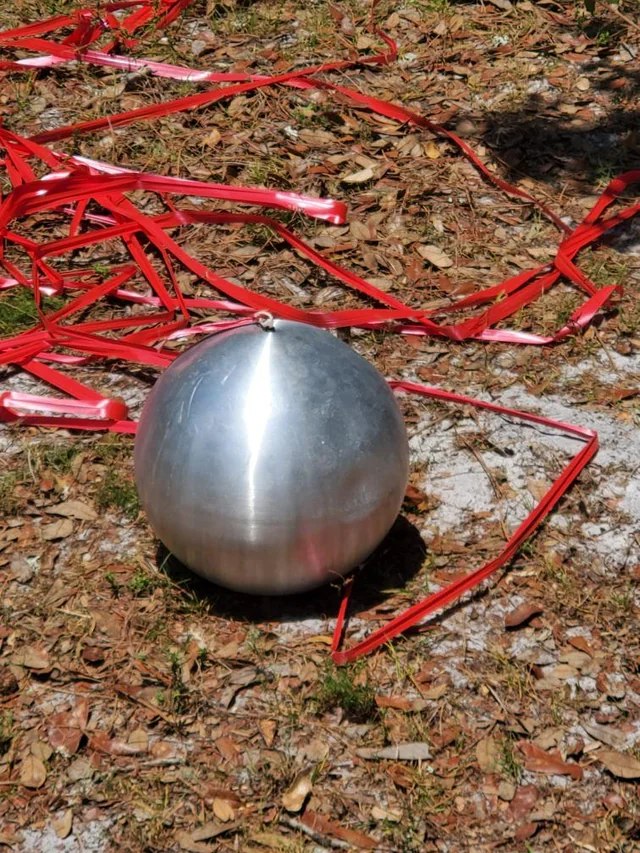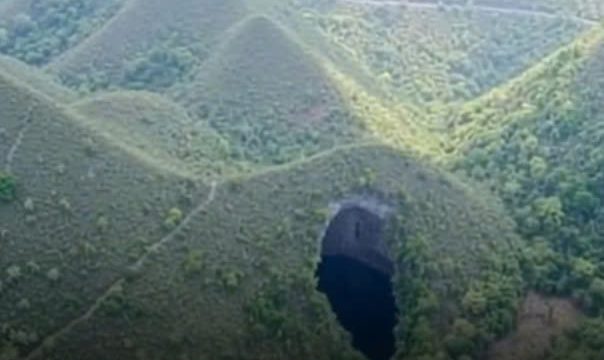Imagine walking out into a field on your property and spotting something strange glinting in the grass—a shiny silver sphere, perfectly round, with red ribbons trailing from it and a crumpled parachute lying nearby. That’s exactly what one Reddit user encountered when they stumbled upon a mysterious metallic ball in their pasture. At first, it seemed like something out of a science fiction film or maybe even a piece of alien technology.

But the truth turned out to be much more down-to-earth—literally. The object was a radar calibration sphere, a highly specialized tool used in radar system testing. A radar calibration sphere is exactly what the name suggests: a precisely engineered sphere designed to provide a consistent, predictable target for radar systems. These devices are ultra-reflective, made from either solid metal or metal-coated materials, and perfectly spherical to ensure their radar signature is the same from every angle. That consistent return signal is crucial when fine-tuning sensitive radar systems, whether they’re tracking weather patterns, locating aircraft, or gathering data from satellites.
Irregular or angled objects reflect radar differently depending on their position, but a sphere eliminates that variable entirely, giving engineers and scientists a reliable reference point to calibrate against. So why would one of these high-tech objects suddenly appear in someone’s field? Radar calibration spheres are often released from aircraft or high-altitude balloons as part of radar testing exercises. Once released, they drift downward, sometimes from many thousands of feet in the air, and are slowed by a parachute to ensure a controlled descent. The red ribbons attached to the sphere are part of the parachute’s rigging, helping to stabilize the sphere in flight and making it more visible once it lands.
Because wind currents can carry them long distances, these spheres can land miles away from their launch point, often surprising unsuspecting homeowners or farmers who happen to find them. The one in this case likely traveled quite a distance before settling into its final resting place in that pasture. Understandably, finding a strange metallic ball with a parachute could raise concerns about safety, but radar calibration spheres are harmless. They contain no explosives, no radioactive materials, and no propellants. They are simply solid, reflective spheres built for a single purpose—to bounce radar waves back to the source with a precise and consistent signature.
Even so, it’s still recommended to notify local authorities or the relevant aerospace organization if you come across one. In many cases, the sphere might be reusable, and the organization that launched it—be it a government agency, military branch, or research group—may want it back. At the very least, they can confirm it isn’t interfering with active communications or other ongoing projects. These spheres are used by a variety of organizations, including NASA, the military, and weather-monitoring agencies. While they might resemble a giant bowling ball from a distance, they play a critical role in serious scientific and technical work. They help ensure that weather radar systems are accurately tracking storms, that air traffic control systems can reliably locate aircraft, and that data from satellites and space missions is precise.
In many ways, finding a radar calibration sphere is like stumbling upon a small but important piece of the vast and complex puzzle of modern science. It’s a reminder that even in rural or seemingly isolated areas, advanced technology is constantly at work overhead—tracking, measuring, and ensuring the systems we depend on are working correctly. To most people, a sphere like this might just seem like an odd metallic object connected to a parachute, but beneath its simple exterior is a story of precision engineering and quiet but critical contribution to global technology.
It embodies how something that looks so ordinary can, in fact, be part of a sophisticated network of tools and systems that keep our skies safe, improve our understanding of the weather, and support missions reaching far beyond our atmosphere. The next time you see something strange and shiny lying in a field, it might not be alien tech—but it could very well be a small but fascinating example of human innovation making an impact on the world in ways most of us never see.





